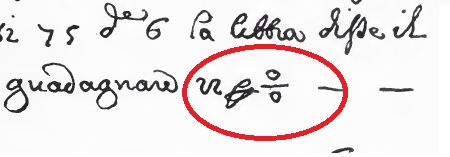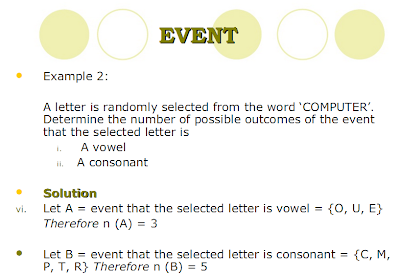Wednesday, March 20, 2013
Notes Chapter 10: Angles of Elevation and Depression by Ambikai
Tuesday, March 19, 2013
History of the percent sign - by Yen Lin
HISTORY OF THE PERCENT SIGN
The percent sign (%) is the symbol used to indicate a percentage (that the preceding number is divided by one hundred).
Related signs include the permille (per thousand) sign ‰ and the permyriad (per ten thousand) sign ‱ (also known as a basis point), which indicate that a number is divided by one thousand or ten thousand respectively. Higher proportions use parts-per notation.
Evolution
Prior to 1425 there is no evidence of a special symbol being used for percentage. The Italian term per cento, "for a hundred", was used as well as several different abbreviations (e.g. "per 100", "p 100", "p cento", etc.). Examples of this can be seen in the 1339 arithmetic text depicted below.The letter p with its shaft crossed by a horizontal or diagonal strike conventionally stood for per, por, par, or pur in Medieval and Renaissance paleography.
At some point a scribe of some sort used the abbreviation "pc" with a tiny loop or circle (depicting the ending -o used in Italian numeration for primo, secondo,etc.) This appears in some additional pages of a 1425 text which were probably added around 1435. This is shown below.

The "pc" with a loop eventually evolved into a horizontal fraction sign by 1650 and thereafter lost the "per".


history of circles by cynthia
Circles
The circle has been known since before the beginning of recorded history. Natural circles would have been observed, such as the Moon, Sun, and a short plant stalk blowing in the wind on sand, which forms a circle shape in the sand. The circle is the basis for the wheel, which, with related inventions such as gears, makes much of modern machinery possible. In mathematics, the study of the circle has helped inspire the development of geometry, astronomy, and calculus.
Early science, particularly geometry and astrology and astronomy, was connected to the divine for most medieval scholars, and many believed that there was something intrinsically "divine" or "perfect" that could be found in circles.
Some highlights in the history of the circle are:
- 1700 BCE – The Rhind papyrus gives a method to find the area of a circular field. The result corresponds to 256 / 81 (3.16049...) as an approximate value of π.[1]
- 300 BCE – Book 3 of Euclid's Elements deals with the properties of circles.
- In Plato's Seventh Letter there is a detailed definition and explanation of the circle. Plato explains the perfect circle, and how it is different from any drawing, words, definition or explanation.
- 1880 CE– Lindemann proves that π is transcendental, effectively settling the millennia-old problem of squaring the circle.

Subscribe to:
Posts (Atom)















